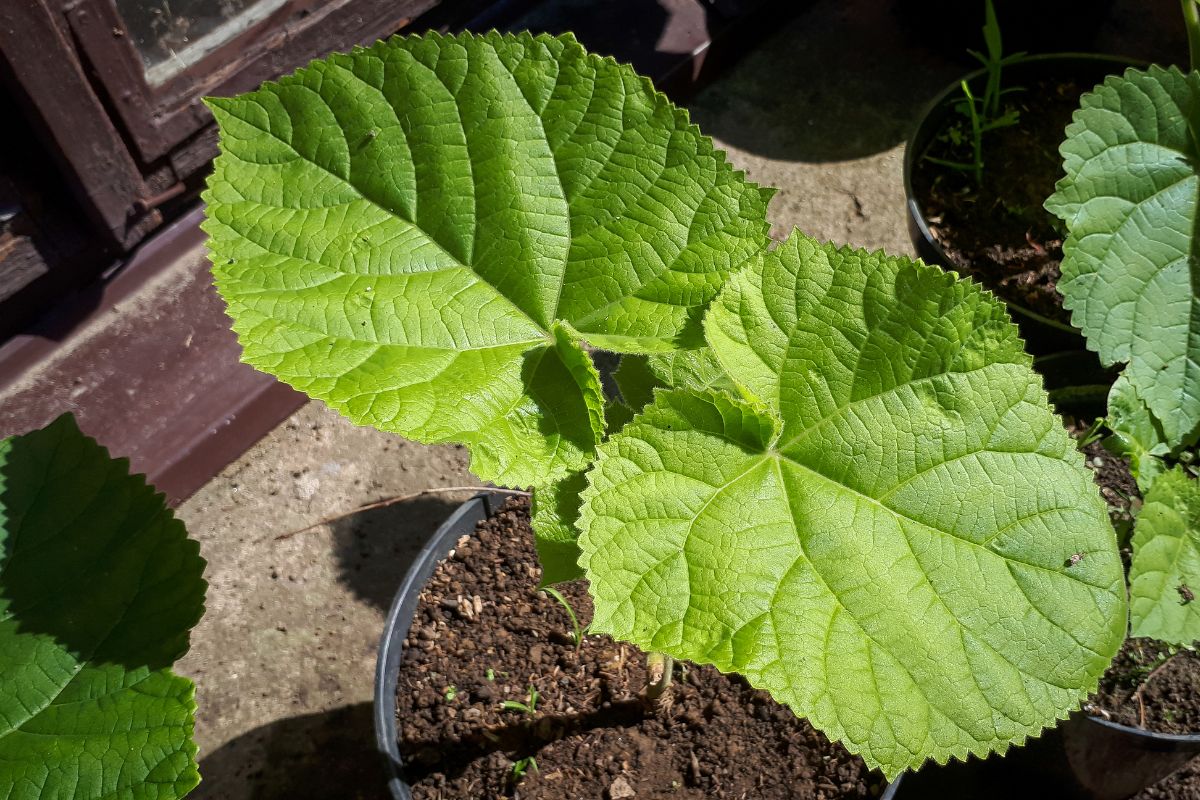Show table of content Hide table of content
Transforming your garden into a cool, refreshing oasis when temperatures soar has become a priority for many homeowners. The Paulownia tree stands out as nature’s answer to scorching heat with its remarkable growth rate and heat-resistant properties. This extraordinary tree can create much-needed shade in record time, making it an excellent choice for those unwilling to wait decades for relief from the sun.
The fastest growing shade tree for your garden
The Paulownia tree, native to Asia, defies conventional growth patterns with its extraordinary development speed. In optimal conditions, this botanical marvel can grow an astonishing 10-13 feet annually. A modest 2-foot sapling can transform into a 20-foot shade provider within just two growing seasons. This accelerated growth makes the Paulownia the perfect solution for homeowners seeking immediate shade.
What truly sets this tree apart are its magnificent heart-shaped leaves, which can span up to 16 inches across. These enormous leaves form a dense, luxurious canopy that creates substantial shade. The impressive foliage surface area explains why the Paulownia excels at cooling surrounding areas, making it a natural solution for maintaining comfort during extreme heat when temperatures reach 104°F and beyond.
Garden All good gardeners do this simple action to prevent aphids on rose bushes.
At maturity, the Paulownia reaches 45-65 feet tall with an equally impressive spread. This dramatic vertical growth creates a living umbrella over your outdoor space. Unlike many slow-growing shade trees that might take 20 years to provide meaningful relief, the Paulownia delivers substantial shade within 2-3 years of planting.
Nature’s air conditioner that thrives in heat
The Paulownia doesn’t merely survive hot weather—it thrives in it. With origins in warm Asian regions, this tree possesses natural resilience to high temperatures, often performing best when thermometers climb above 90°F. Its deep root system efficiently accesses groundwater resources even when surface soil becomes parched and cracked.
This heat tolerance doesn’t compromise its lush foliage. During periods when other trees struggle with leaf scorch and wilting, the Paulownia maintains vibrant, turgid leaves. This resilience ensures reliable shade exactly when you need it most—during those sweltering summer days when outdoor activities would otherwise be unbearable.
Beyond simply blocking sunlight, the Paulownia acts as a natural cooling system through evapotranspiration. A mature specimen can release up to 50 gallons of water vapor daily during hot weather. This natural process creates a microclimate beneath the canopy that can be 10-15°F cooler than surrounding areas. Imagine transforming your outdoor space with this natural cooling effect, similar to how regular walking in shaded areas makes exercise more comfortable during hot weather.
Garden A simple cup at the base of your raspberry bushes – your harvest will double.
Spring beauty beyond practical benefits
While the Paulownia’s rapid growth and cooling properties make it practical, its aesthetic appeal shouldn’t be overlooked. Before leafing out in spring, the tree produces spectacular displays of fragrant, tubular purple flowers in dramatic panicles. This enchanting spring show, lasting approximately three weeks, transforms the tree into a giant purple bouquet.
These foxglove-like blooms emit a delicate fragrance that attracts numerous pollinators to your garden. The flowering spectacle is so impressive that the Paulownia earned nicknames like “foxglove tree” and “imperial tree.” This beautiful display adds seasonal interest beyond the tree’s practical cooling benefits.
Several Paulownia varieties offer different flowering characteristics. The common Paulownia tomentosa features blue-violet flowers, while Paulownia fortunei produces larger, more fragrant blooms. For cooler regions, Paulownia kawakamii offers earlier flowering periods. These options allow gardeners to select varieties that best match their aesthetic preferences while still enjoying rapid growth and cooling properties, much like choosing the right variety of health foods to maximize specific benefits.
Planting and care for optimal growth
To maximize the Paulownia’s extraordinary growth potential, proper planting and maintenance are essential. Select a location receiving at least six hours of direct sunlight daily, preferably with southern or southwestern exposure. Remember to allocate sufficient space—at least 25-30 feet from structures—to accommodate the tree’s ultimate size.
Garden Why removing ivy from trees and facades could be the worst thing to do.
When planting, dig a hole twice the width of the root ball and equal in depth. Incorporate organic matter into the backfill soil and ensure the root collar sits level with the ground surface. Once planted, water thoroughly and install a sturdy stake for support during the first two years of accelerated growth.
Water management significantly impacts growth rates. During the establishment period, provide consistent moisture to fuel rapid development. For the first month, water deeply every 2-3 days. Gradually reduce frequency while increasing volume per watering session as the root system develops. By the second year, the tree will require supplemental watering only during prolonged dry periods.
While requiring minimal pruning when grown naturally, the Paulownia responds well to pollarding techniques. Cutting branches back to 6-10 feet from the ground in late winter stimulates vigorous new growth with exceptionally large leaves, sometimes reaching 24 inches across. This practice helps maintain a manageable size while maximizing shade coverage, similar to how strategic maintenance keeps unwanted pests at bay in other aspects of home care.
When considering a Paulownia, note several important factors. Its vigorous root system necessitates planting away from utilities and foundations. In warmer regions, some Paulownia species can become invasive through seed dispersal, so selecting sterile cultivars like ‘Fast Blue’ or ‘Cotevisa 2’ mitigates this concern. Cold hardiness varies by species, with Paulownia tomentosa offering better resistance to temperatures down to 5°F.
Garden How a simple gesture can double your lemon tree’s harvest.
Garden enthusiasts across various regions report transformative results with Paulownias. They consistently describe the remarkable sensation of sitting beneath these trees on hot days, enjoying temperatures that feel significantly cooler than surrounding areas. Many homeowners appreciate how quickly these trees create usable outdoor living space during summer heat, making their gardens more functional while saving on cooling costs for adjacent indoor spaces.


